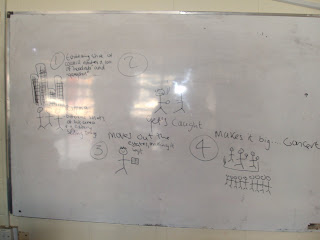There are three main theories on narratives by Tzvetan Todorov, Vladimir Propp and Claude Levi-Strauss
Tzvetan Todorov theory of equilibrium:
All stories begin at equilibrium however it is then disrupted, which is set in a motion of events There is then a resolution which results in the creation of a new or different equilibrium.
The chain of events is as follows:
Equilibrium>Disturbance>Resolution>Re-Equilibrium
This is a narrative structure found in most Hollywood films.
Vladimir Propp
- Essentially interested in the narrative of folk tales and identified a theory about folk tales being similar in many ways.
- They were about the same struggle and had the same 'Stock Characters'
- He identified a theory about characters and actions as narrative functions; they provide a structure for the text.
His list of 'Stock Characters' consisted of:
- The villain — struggles against the hero.
- The donor — prepares the hero or gives the hero some magical object.
- The (magical) helper — helps the hero in the quest.
- The princess or prize — the hero deserves her throughout the story but is unable to marry her because of an unfair evil, usually because of the villain. the hero's journey is often ended when he marries the princess, thereby beating the villain.
- her father — gives the task to the hero, identifies the false hero, marries the hero, often sought for during the narrative. Propp noted that functionally, the princess and the father can not be clearly distinguished.
- The dispatcher — character who makes the lack known and sends the hero off.
- The hero or victim/seeker hero — reacts to the donor, weds the princess.
- False hero — takes credit for the hero’s actions or tries to marry the princess.
Claude Levi-Strauss: Binary oppositions
Meanings, including narrative, depends on binary oppositions- he explores these in terms of underlying typical themes rather than events.
Conflict helps to drive the narrative.
Man vs Woman
Old vs Young
Hero vs Villain
West vs East
Good vs Bad






